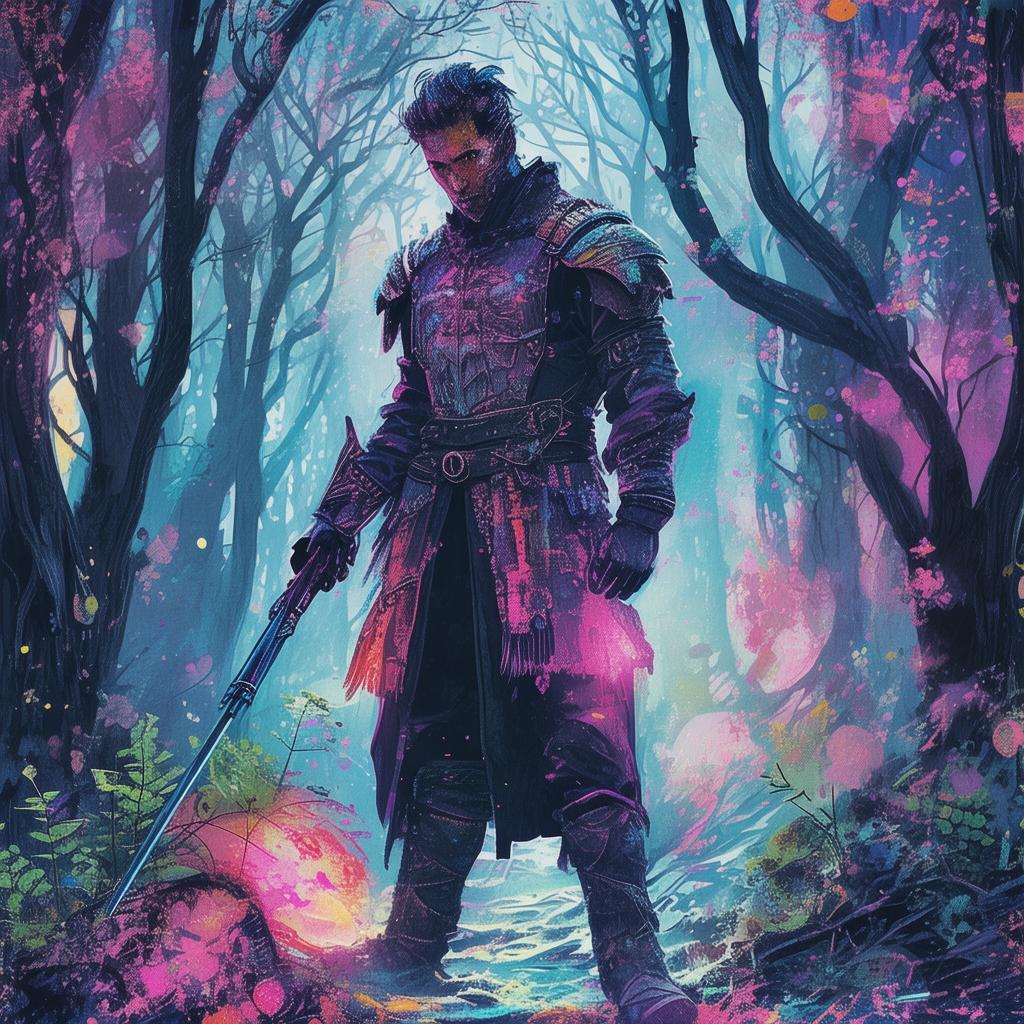The Last Lament of the Neon Wanderer
In the heart of a city where the sun rarely pierced through the smog, there existed a radio broadcast that resonated with the souls of the lost and the forgotten. "The Urban Odyssey" was not just a story; it was a beacon for those who sought escape, meaning, or merely a temporary respite from the urban chaos.
The broadcast began with a voice that seemed to whisper secrets of the past, a voice that held the promise of an ancient quest. It spoke of a neon wanderer, a man whose journey through the urban wasteland was marked by shadows and light, pain and redemption.
The title of this odyssey, "The Last Lament of the Neon Wanderer," became a mantra for those who tuned in. It was a testament to the wanderer's journey, a journey that was as much about himself as it was about the quest.
In the dim light of an abandoned subway station, a man named Kael stood, his eyes reflecting the flickering glow of the train tracks. His name was Kael, and he was the neon wanderer, the protagonist of this tale. Kael's life was a patchwork of misdeeds and a few fleeting moments of glory. He was a former radio star, whose voice had once been a beacon of hope for the lost. But like the neon lights that guided the way through the wasteland, Kael's fame had dimmed, leaving him wandering in the darkness of his own making.
The broadcast of "The Urban Odyssey" had found him on the brink of despair. It was a call to action, a quest that promised to unravel the mysteries of his past. The voice on the radio spoke of a legendary item, a beacon of light in a world shrouded in darkness. It was said to be the key to a hidden city, a city that was not of this world, a city of dreams and shadows.
Kael's journey began in the forgotten alleys of the city, where the echoes of the past whispered through the walls. He encountered characters who were as enigmatic as they were essential to his quest. There was the old woman who lived in a cardboard box, her stories of the past as valuable as the legendary item she was willing to give up. There was the street artist, whose vivid murals of a city long gone painted a picture of a world Kael longed to be part of. And there was the mysterious man in the coat, whose presence was as unsettling as it was comforting.

As Kael followed the clues, he uncovered pieces of his own life. He discovered that the legendary item was not just a physical object, but a symbol of his own redemption. It was a key that would unlock the door to his past, a past that held both the darkness he feared and the light he desired.
The quest took Kael to the top of a skyscraper, where the wind howled and the city stretched out below. It was there that he faced his greatest challenge. He had to choose between his past and his future, between the darkness that haunted him and the light that could set him free.
The climax of his journey was unexpected and shattering. Kael realized that the true quest was not about finding the legendary item, but about confronting the man he once was and the man he could become. He had to confront the pain of his past and the fear of his future.
In a twist that would resonate with listeners, Kael found the item not in a hidden city, but in the heart of his own home, in the attic where he had once stored his dreams. The item was a microphone, a symbol of his voice, a reminder that he still had the power to create light in the darkness.
The ending of "The Last Lament of the Neon Wanderer" was bittersweet. Kael returned to the subway station, where he had first heard the broadcast. He stood in the dim light, his voice echoing through the station, a voice that was once lost but now found. He had not found the hidden city, but he had found his own heart, and in doing so, he had become the beacon of light that he had always longed to be.
The story of the neon wanderer was a tale of transformation, of how one man could find redemption in the darkest of places. It was a story that resonated with the listeners, a story that showed that in the urban wasteland, even the most lost souls could find their way home.
✨ Original Statement ✨
All articles published on this website (including but not limited to text, images, videos, and other content) are original or authorized for reposting and are protected by relevant laws. Without the explicit written permission of this website, no individual or organization may copy, modify, repost, or use the content for commercial purposes.
If you need to quote or cooperate, please contact this site for authorization. We reserve the right to pursue legal responsibility for any unauthorized use.
Hereby declared.









